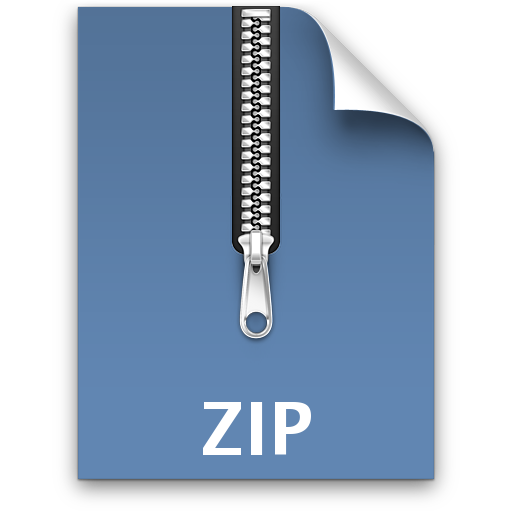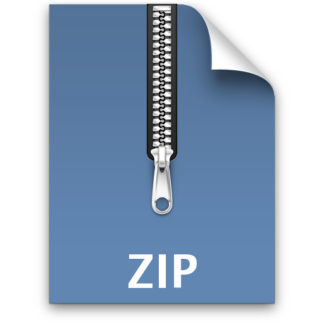Description
1 Introduction
In this project, you will write a logic for an agent to do several tasks in a very tiny version of Minecraft.
2 Knowledge Base
We have already implemented the mechanics of the game for you in cmpecraft.pro and constants.pro. You should
not modify these files. The map for the game is given in map.txt. You can change it to test your agent in different
settings.
The main data structure for this project is given in state/3 predicate. After you load your main file (main.pro),
you can check the current state with the following query:
?- state(AgentDict, ObjectDict, Time).
AgentDict = agent dict{hp:10, hunger:100000, inventory:bag{}, x:3, y:4},
ObjectDict = object dict{0:object{hp:3, type:stone, x:2, y:1}, …}
Time = 1
##########
# S TT S#
# O TT C#
# T T#
# @ C#
#C S#
##########
This state is generated from the map file map.txt. Here, each character represents a different object in the game:
• #: Walls and bedrocks.
• @: The agent.
• S: Stone.
• T: Tree.
• O: Food.
• C: Cobblestone.
The agent dictionary consists of four attributes: hp (hit points), hunger (hunger level), x (x-axis location), y
(y-axis location), and inventory. The agent can collect different items from different objects, and store them in its
inventory. The inventory is a dictionary that contains the name of the item as the key, and the number of that
item as the value.
The object dictionary holds objects in the environment. Each item in this dictionary is also represented as a
dictionary which has four attributes: hp (how many left clicks are required to mine this object), type, x, y.
Each object yields an item when they are mined, or chopped, or collected. Namely, if the agent mines a stone (i.e.
left clicks to the tile that contain a stone until the stone’s hp drops below zero), the stone yields three cobblestones.
This information is provided in yields/2 in constants.pro.
The agent has (is going to have) four main actions: place a cobblestone, left clicking in a specific direction,
crafting items, and moving in a direction. These low-level actions are provided for you. In other words, given an
1 CmpE 260
environment state, you can find the next state after executing one of these actions. You can execute random move.
to see the agent executing random actions.
3 Predicates
In this section, we will go over the predicates that you are going to implement.
3.1 manhattan distance(+List1, +List2, -Distance) 10 points
This predicate will compute the Manhattan distance between two lists that contain two items each. The Manhattan
distance is the fancy name for `1 norm:
D([x1, y1], [x2, y2]) = |x1 − x2| + |y1 − y2| (1)
All test cases will contain valid List1 and List2 (i.e. no empty lists).
Examples:
?- manhattan distance([1, 2], [3, 7], D).
D = 7.
?- manhattan distance([12, 3], [3, 7], D).
D = 13.
3.2 minimum of list(+List, -Minimum) 10 points
This predicate will unify Minimum with the minimum of List. All test cases will contain valid List (i.e. no empty
lists).
Examples:
?- minimum of list([3, 7, 1, 4], M).
M = 1.
?- minimum of list([34], M).
M = 34.
3.3 find nearest type(+State, +ObjectType, -ObjKey, -Object, -Distance) 10 points
This predicate will find the closest ObjectType in the given State, and unify the found object’s key (in the
ObjectDict) with ObjKey, unify the found object with Object, and unify the Manhattan distance between the
object and the agent with Distance. Here, State is a list: [AgentDict, ObjectDict, Time]. If there is no object
with the given type, the predicate should be false. The following examples are valid for the given example map file.
Examples:
?- state(A, O, T), State=[A, O, T], find nearest type(State, tree, Key, Obj, Dist).
K = 5,
Obj = object{hp:3, type:tree, x:4, y:2},
Dist = 3.
?- state(A, O, T), State=[A, O, T], find nearest type(State, stone, Key, Obj, Dist).
K = 0,
Obj = object{hp:3, type:tree, x:2, y:1},
Dist = 4.
3.4 navigate to(+State, +X, +Y, -ActionList, +DepthLimit) 10 points
This predicate will give an ActionList that will navigate the agent to X and Y location. The number of actions in
ActionList should not be greater than DepthLimit, though, it can be less than the depth limit1
. All test cases will
contain valid X and Y. The following examples are valid for the given example map file.
1
If you do not introduce such a depth limit, you might stuck into an infinite loop, depending on your implementation
2
Examples:
?- state(A, O, T), State=[A, O, T], navigate to(State, 6, 5, ActionList, 3).
false.
?- state(A, O, T), State=[A, O, T], navigate to(State, 6, 5, ActionList, 4).
ActionList = [go right, go right, go right, go down]
?- state(A, O, T), State=[A, O, T], navigate to(State, 6, 5, ActionList, 5).
ActionList = [go right, go right, go right, go down]
3.5 chop nearest tree(+State, -ActionList) 10 points
This predicate will generate the necessary actions to find the nearest tree, navigate to that location, and chop it
(i.e. left clicking to it four times). After executing the action list, the agent should have the yield of the tree in its
inventory. If there is no tree in the state, then the predicate should be false. The following example is valid for the
given example map file.
Examples:
?- state(A, O, T), State=[A, O, T], chop nearest tree(State, ActionList).
ActionList = [go right, go up, go up, left click c, left click c, left click c, left click c]
3.6 mine nearest stone(+State, -ActionList) 10 points
This predicate will generate the necessary actions to find the nearest stone, navigate to that location, and mine it
(i.e. left clicking to it four times). After executing the action list, the agent should have the yield of the stone in its
inventory. If there is no mine in the state, then the predicate should be false. The following example is valid for
the given example map file.
Examples:
?- state(A, O, T), State=[A, O, T], chop nearest tree(State, ActionList).
ActionList = [go up, go up, go up, go left, left click c, left click c, left click c, left click c]
3.7 gather nearest food(+State, -ActionList) 10 points
This predicate will generate the necessary actions to find the nearest food resource, navigate to that location, and
collect it (i.e. left clicking to it one time). After executing the action list, the agent should have the yield of the food
in its inventory. If there is no food in the state, then the predicate should be false. The following example is valid
for the given example map file.
Examples:
?- state(A, O, T), State=[A, O, T], gather nearest food(State, ActionList).
ActionList = [go up, go up, go left, left click c]
3.8 collect requirements(+State, +ItemType, -ActionList) 10 points
Given an item type, for example stone pickaxe, this predicate will generate the necessary actions to collect the
required items to craft a stone pickaxe. After executing the action list, the agent should be able to craft a stone
pickaxe. If the current map does not contain all the requirements, then the predicate should be false. The following
example is valid for the given example map file.
Examples:
?- state(A, O, T), State=[A, O, T], gather nearest food(State, ActionList).
ActionList = [go right, go up, go up, left click c | …]
3 CmpE 260
3.9 find castle location(+State, -XMin, -YMin, -XMax, -YMax) 5 points
This predicate will help the agent to find a location to build a castle. Castle is just a fancy name for a three by three
cobblestone blocks. An appropriate location for a castle is a three by three area that does not contain any object.
If there is no appropriate location, then the predicate should be false. The following example is valid for the given
example map file.
Examples:
?- state(A, O, T), State=[A, O, T], find castle location(State, XMin, YMin, XMax, YMax).
XMin = 2, YMin = 3, XMax = 4, YMax = 5.
3.10 make castle(+State, -ActionList) 15 points
This predicate will generate an action list to first acquire the necessary requirements for building a castle (i.e. nine
cobblestones, so the agent should first mine three stone blocks), then find a castle location, then build the castle
by placing cobblestone tiles into a three by three area. If there is no appropriate location or resources, then the
predicate should be false. The following example is valid for the given example map file.
Examples:
?- state(A, O, T), State=[A, O, T], make castle(State, ActionList).
ActionList = [go up, go up, go up, go left, left click c | …].
3.11 Printing states
You can use execute actions/3 and execute print actions/3 (same as execute actions) but renders the game
state in ASCII) which simulates the action list from the given state and return the final state. For example, ?-
state(A, O, T), State=[A, O, T], make castle(State, ActionList),
execute print actions(State, ActionList, FinalState).
This will help you see the actions of the agent, and hopefully allow you to debug more easily.
4 Documentation
Please explain what each predicate is for with comments in the code. Codes with no comments might lose points if
a predicate is too hard to understand.
5 Submission
You will submit two files: main.pro, feedback.txt. Your code should be in one file named main.pro. First four
lines of your main.pro file must have exactly the lines below since it will be used for compiling and testing your code
automatically:
% name surname
% student id
% compiling: yes
% complete: yes
The third line denotes whether your code compiles correctly, and the fourth line denotes whether you completed all
of the project, which must be no if you’re doing a partial submission. This whole part must be lowercase and include
only the English alphabet. Example:
% alper ahmetoglu
% 2012400147
% compiling: yes
% complete: yes
We are interested in your feedback about the project. In the feedback.txt file, please write your feedback. This
is optional, you may leave it empty and omit its submission.
4 CmpE 260
6 Tips and Tricks
Although the project may seem long at the first glance, it can be done in a reasonable amount of time. Therefore,
do not panic. Before starting, please carefully examine cmpecraft.pro and constants.pro. It might be also useful
to first run a hard-coded action list, then think about how to generate that action list.
• Do not rush. First think about the requirements, what you need, how you can solve it in a modular way. If
you can verbally describe your needs, you can probably implement it easily.
• Try to formalize the problem, then try to convert the logic formulate to Prolog.
• You can use findall/3, bagof/3 or setof/3.
• You can use extra predicates and it is highly recommended. The ones given above are compulsory.
• You can add extra knowledge.
• If a predicate becomes too complex, either divide it into some predicates or take another approach. Use
debugging (through trace/1), approach your program systematically.
5 CmpE 260



